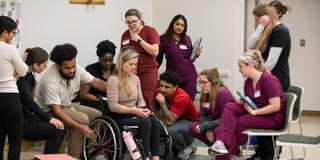
The Work of Movement is Hands-On
How Doctor of Physical Therapy students at Saint Joseph's University
are getting real world experience from day one.
When most people think of physical therapy doctoral programs, they assume a divided program — one part lecture-style classroom instruction, one part hands-on clinical work. And while on paper students do spend more time in the classroom during the first half of their degree, that old school model just isn’t how it’s done these days. At least, not at Saint Joseph’s cutting-edge Doctor of Physical Therapy (DPT) program. Here, DPT students are challenged to be hands-on from day one.
This is large in part due to the program’s adoption of the movement systems model. Endorsed by the APTA, the movement systems model is an approach that views PTs as “movement specialists” who look at the body holistically in terms of its movement functions rather than treating individual parts. The movement systems model requires doctoral PT programs to follow “a more integrated curriculum with added clinical skills and movement analysis aligned with anatomy coursework,” says Lora Packel, PT, MSPT, PhD, associate dean of the School of Health Professions and the former chair of the department of physical therapy. “Which creates an ‘applied-while-learning’ model.”
It’s important for students to connect the research and coursework to actual people and understand healthcare is not black and white. Getting real life experience helps future practitioners learn how to deal with ambiguity and make good clinical decisions.”
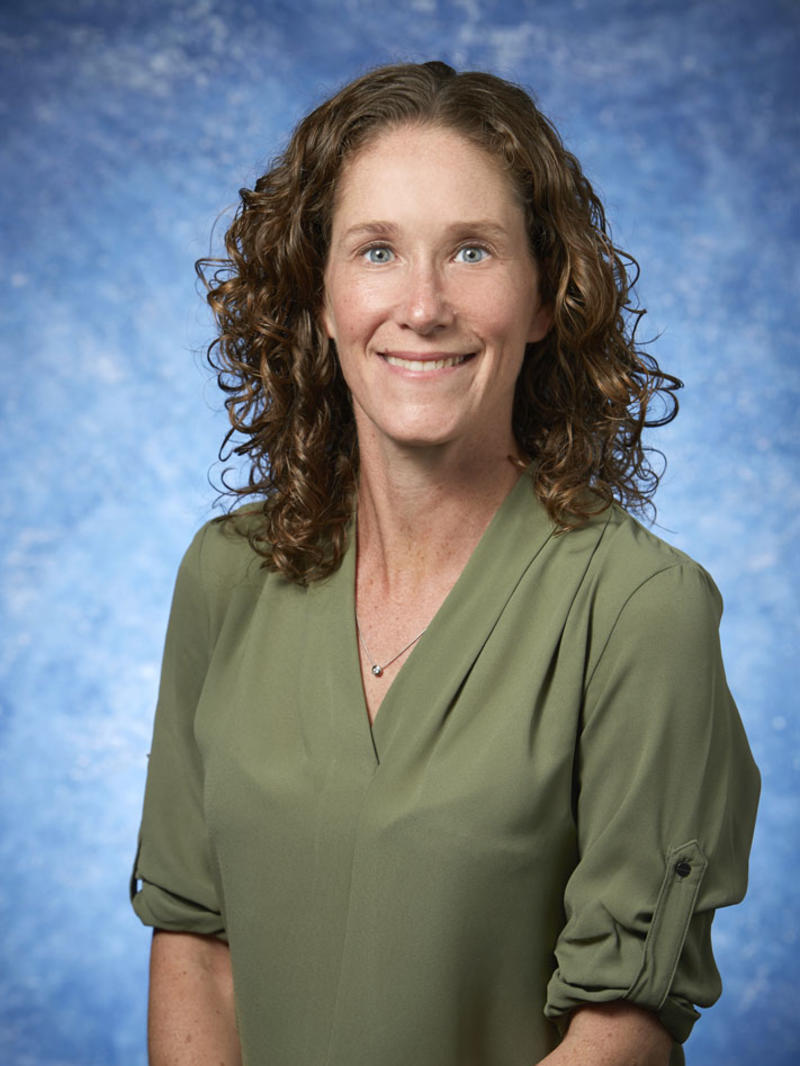
Lora Packel, PT, MSPT, PhD
Associate Dean of the School of Health Professions and the former chair of the department of physical therapy at Saint Joseph's University
SJU’s DPT program (formerly USciences) was one of the first in the country to adopt the movement systems model, now considered an industry best practice.
“It’s important for students to connect the research and coursework to actual people and understand healthcare is not black and white,” says Packel. She adds that getting real life experience helps future practitioners “learn how to deal with ambiguity and make good clinical decisions.”
This increased access to hands-on learning is achieved in a few ways throughout a student’s academic journey: in pro-bono clinics, integrated clinical experiences, simulation labs and full-time clinical rotations.
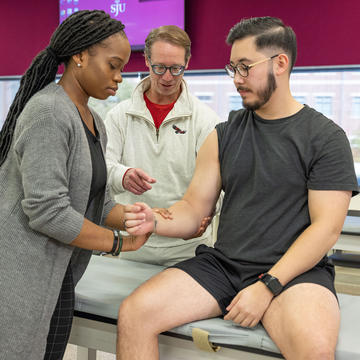
Pro Bono PT Clinics
From their very first semester, DPT students gain hands-on experience working in pro bono clinics under the supervision of licensed PTs and faculty as well as peer mentors. The peer-to-peer model, where a first year student is matched with a more experienced classmate, is a unique benefit to the program, says alumna Tram Tran, DPT ’19, who currently works as a PT at a memory care assisted living facility in New Jersey.
“Being paired with a student mentor was really beneficial. It was comforting to hear from someone who had been where I was not long before and could simplify the work as I learned.”
Tran also says working in the clinic exposed her to a variety of patient populations, which altered her career path in a positive way.
“Working with the geriatric population developed into a passion for me, specifically when it came to memory care.”
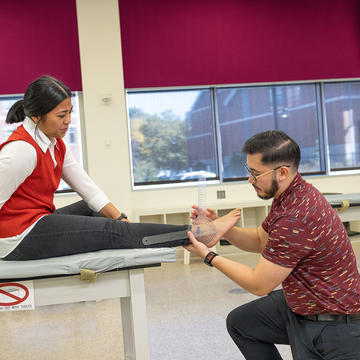
Integrated Clinical Experiences
Weaved throughout the curriculum, integrated clinical experiences allow DPT students the opportunity to work as part of a care team alongside students in other health sciences programs. Together, they evaluate community members who come to on campus clinic hours.
Working collaboratively with his classmates was one of the reasons Steve George, DPT ’17 remembers loving the program.
“Being in school alongside other academically driven students who are focused on their professional path was motivating,” says George. “Everyone was on the same wavelength.”
Now in his role as a full time clinician with Healing Star Physical Therapy Wellness Center, George accepts students from SJU for clinical rotations. “The students who come from this program are well-prepared. It’s a rigorous curriculum, but the quality of education and program structure really set students up for success.”
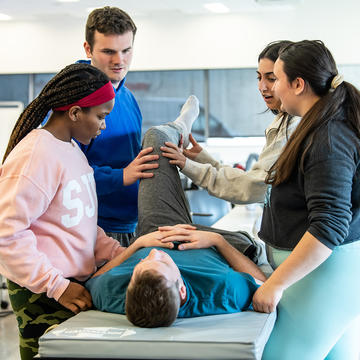
Simulation Labs
When they’re not working with real life patients, you can often find DPT students in the SIM center, located at the University City location. There, students can use the state-of-the-art technology to practice PT in an acute care setting with a mock patient. This work is crucial to helping students learn how to work with patients in a variety of environments and to practice their manual skills.
“What I personally really like about SJU is the preparation they have for the outpatient clinic environment,” says Evan Hathway, DPT, clinic director at Woodstown Physical Therapy’s Mullica Hill location, who also mentors students from SJU during clinicals. “I continue to take them because of their manual skills and knowledge of anatomy and skills — their level of preparation aligns with how we treat patients.”
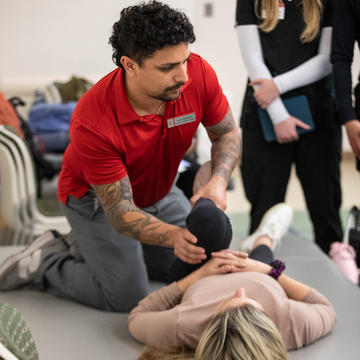
Full-time Clinical Rotations
The SJU DPT program’s clinical rotation model includes three full time, 12-week placements in three different practice settings. By the time a student is headed to their first rotation, they’ve already completed countless hours of hands-on work with patients and simulations. But that doesn’t mean there isn’t more to learn.
“Technology and treatment practices are updated all of the time, so PTs are always learning,” says George.
When giving advice to students, Hathway often tells them to “keep an open mindset. There is so much to learn. Not every patient presents the same. Not every case is straightforward. It can feel black and white in courses but when you’re in the clinic there are so many factors and you need to be open to learning and think with a wide lens to keep improving.”